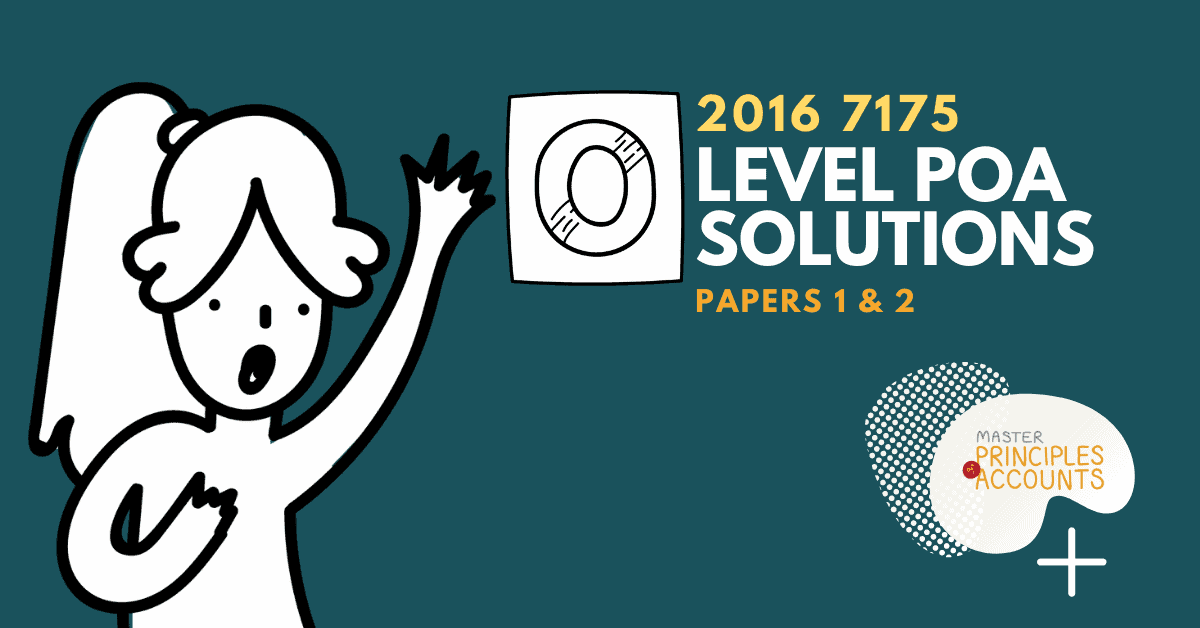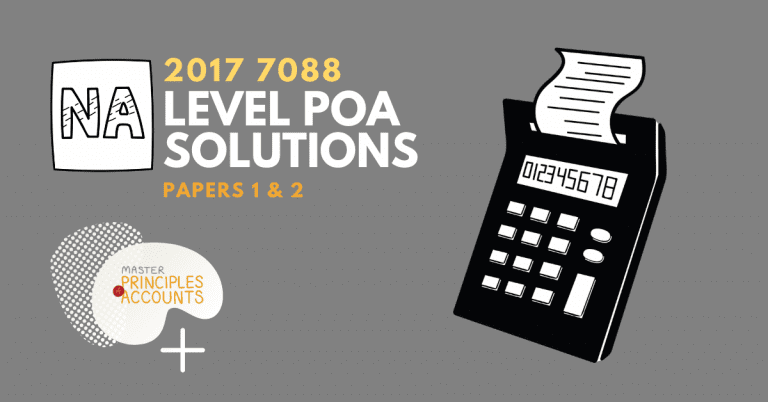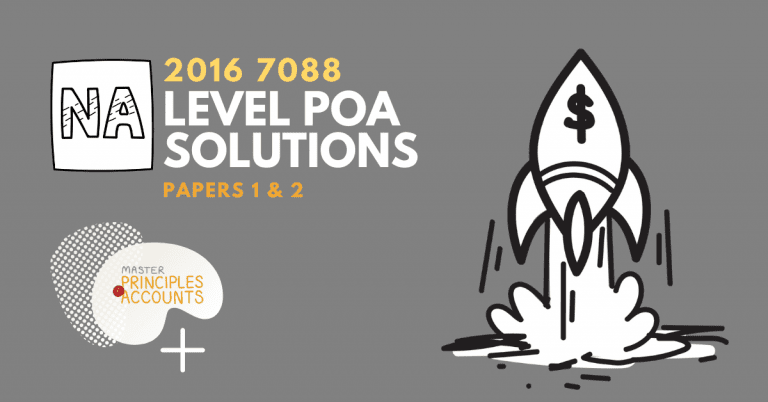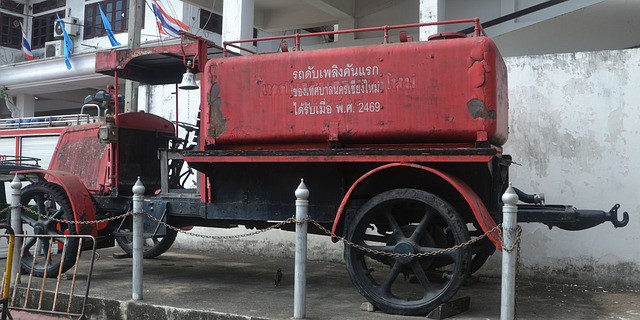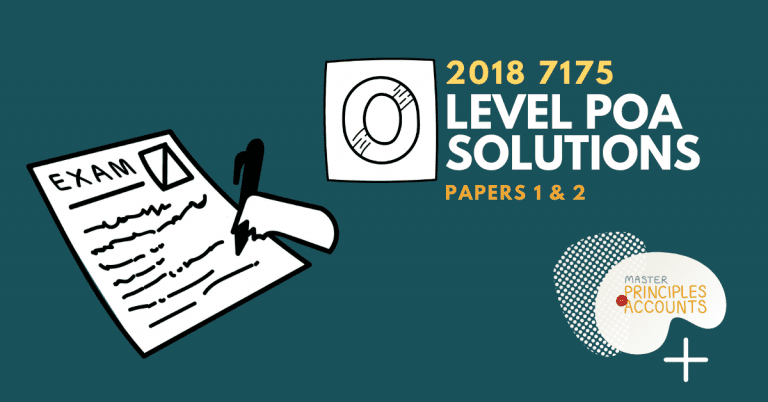2016 O Level POA Answers
Paper 1 :
General ledger
Discount allowed account
| Date | Particulars | Dr ($) | Cr ($) | Balance |
| 2016 | ||||
| Jul 31 | Total trade receivables | 15 |
Discount received account
| Date | Particulars | Dr ($) | Cr ($) | Balance |
| 2016 | ||||
| Jul 31 | Total trade payable | 3 |
Sales ledger
Jin Ma account
| Date | Particulars | Dr ($) | Cr ($) | Balance |
| 2016 | ||||
| Jul 10 | Cash at bank | 485 | ||
| Discount allowed | 15 |
Purchases ledger
Lu Lan account
| Date | Particulars | Dr ($) | Cr ($) | Balance |
| 2016 | ||||
| Jul 10 | Cash at bank | 117 | ||
| Discount received | 3 |
b) The objectivity concept states that all business transactions must be supported by verified evidence that is free from personal bias. The transaction written in the cash book must be supported by source documents such as the bank statement and invoice which contains information of payment terms, amounts and conditions for cash discounts.
c) any from:
- Sales journal
- Sales returns journal
- Purchases journal
- Purchases returns journal
a)
| Trading business | Service business |
| A business that buys and sells goods for profit. | A business that earns revenue through the provision of service to customers. It does not engage in any merchandising operations. |
b) Trading: Stationery/Fruits/Bookstore/Provision shop
(any business that involves buying/selling of goods)
Service business: Consultancy/Advertising/Tuition/Hair salon
(any business that involves providing a service for income)
c)
| True | False | ||
| i) | A service business shows gross profit in the trading section of its income statement | ✔ | |
| ii) | A trading business can calculate gross profit margins as a measure of profitability | ✔ | |
| iii) | A service business has no inventory in its Statement of financial position | ✔ | |
| iv) | A trading business can only earn revenue from sale of goods | ✔ |
Drawings (contra-equity)
| Date | Particulars | Dr ($)+ | Cr ($)- | Balance |
| 2015 | ||||
| Nov 15 | Cash in hand | 240 | 240 Dr | |
| Dec 22 | Inventory | 264 | 504 Dr | |
| 2016 | ||||
| Jun 16 | Cash at bank | 326 | 830 Dr | |
| Aug 31 | Capital | 830 | – |
b) Accounting/Business entity. The business and the owner are separate entities and as such, any drawings of resources belong to the business is recorded as a transaction in the books.
c) Drawings has no effect on the profit for the year.
d) General ledger
ai) Working capital = Current assets – Current liabilities
= (Inventory + trade receivables + other receivables + Cash in hand) – (trade payables + bank overdraft)
= (8 340 + 25630 + 1 450 + 250) – (19 640 + 7 200)
= 35 670 – 26 840
=$8 830
aii) Working capital ratio:
Current asset/Current liabilities
= 35 670/26 840
= 1.33
aiii) Quick ratio:
Current assets – Prepayment – Inventory/Current liabilities
=25 650 + 1 450 + 250/26 840
= 1.02
b) Any 3 from:
- Owner withdrew funds from the business for personal use]
- Allowance for impairment increased significantly due to an economic downturn
- A significant amount of trade receivables became insolvent
- Too much funds were tied up in purchasing non-current assets
Any other suitable points
c)
1) Action:
- Pay suppliers nearer to due date if its longer than 14 days or request supplier for an extended period for due date.
Reason: Improves cashflow as the business has more time to sell the inventory and collect cash from customers to pay for its supplies.
2) Action:
- Make the credit policy more stringent for customers who wants to buy on credit.
- Encourage prompt payment by giving customers cash discount.
Reason: reduces the risk of bad debts/ impairment loss on trade receivables.
3) Action:
- Invest in a Just-in-time (inventory management) software that allows a business to stock up adequately to meet customers’ demands.
Reason:
- To avoid goods from going obsolete/expiring and incurring unnecessary storage/insurance cost on inventory.
- To reduce funds tied up in inventory.
4) Action:
- Engage the services of a debt collection agency to chase trade receivables who are overdue in their accounts
- Consider factoring* the trade receivables to another company
Reason:
- Financing the business cashflow with bank overdraft causes the business to incur additional interest expense.
- Failure to pay off bank overdraft will also result in the bank suing the business to bankruptcy.
*factoring is like selling your trade receivables account for another company to collect at a discount. The business will be able to recover a decent amount of cash instead of writing the whole account as bad.
Paper 2 :
Azman Ltd
Statement of financial performance for the year ended 31 July 2016
| $ | $ | |
| Sales revenue | 325000 | |
| Less: sales returns | 2400 | |
| Net sales revenue | 322600 | |
| Less : cost of sales | 94300 | |
| Gross profit | 228300 | |
| Add: Other Income | ||
| Interest on bank deposit (15000 x 10%) | 1500 | |
| Less: Other Expenses | ||
| Salaries and wages | 78960 | |
| Machine repairs (5600 + 3000) | 8600 | |
| General expenses (39700 – 350 + 560) | 39910 | |
| Depreciation on plant and machinery ((193000 – 68000) x 20%) | 25000 | |
| Depreciation on motor vehicles (84000 x 25%) | 21000 | |
| Impairment loss on trade receivables (800 – 600) | 200 | |
| 173670 | ||
| Profit of the year | 56130 |
Azman Ltd
Statement of financial position as at 31 July 2016
| Assets | $ | $ | $ |
| Non-current asset | cost | Acc. dep. | N.B.V |
| Plant and machinery | 193000 | 93000 | 100000 |
| Motor vehicles | 84000 | 53000 | 31000 |
| Total non-current assets | 131000 | ||
| Current assets | |||
| 10% bank deposit | 15000 | ||
| Trade receivables | 18500 | ||
| Less: allowance for impairment on trade receivables | (800) | 17700 | |
| Cash at bank | 14300 | ||
| Inventory | 36320 | ||
| Prepaid general expense | 350 | ||
| Interest on bank deposit receivables | 500 | ||
| Total current assets | 84170 | ||
| Total assets | 215170 | ||
| Equity and liabilities | |||
| Shareholder’s equity | |||
| Issued share capital, 100,000 ordinary shares | 100000 | ||
| Retained earnings | 89130 | ||
| Total equity | 189130 | ||
| Current liabilities | |||
| Trade payables | 13480 | ||
| Accrued general expenses | 560 | ||
| Dividend payables (100000 x 0.1) | 12000 | ||
| Total current liabilities | 26040 | ||
| Total equity and liabilities | 215170 |
a) Reasons why is it important that a business is profitable:
- To pay suppliers and expenses
- For expansion
- To attract investments
b) Return on equity = (Profit of the year / average equity) x 100%
| 2014 | 2015 | |
| Return on equity | (15400/85000) x 100%=18.12% | (23200/100000) x 100%=23.20% |
c) Vicky Ng’s sales revenue increased from $90000 in 2014 to $130000 in 2015 and gross profit increased from $35000 in 2014 to $44000 in 2015. However, gross profit margin has declined from 38.9% to 33.9%. Vicky could have reduced the selling price in order to attract more customers and resulted in higher sales revenue. Despite the drop in gross profit margin, Vicky’s profit for the year increased from $15400 in 2014 to $23200 in 2015 and profit margin increased from 17.1% in 2014 to 17.9% in 2015. This is due to the better cost control as seen by the decrease in percentage of expenses to net sales revenue from 21.8% (38.9% – 17.1%) in 2014 to 16.0% (33.9% – 17.9%) in 2015. Vicky has also increased the return on equity from 18.12% in 2014 to 23.20% in 2015, indicating that from every hundred dollars a shareholder invested, he is able to get back $23.20 in 2015 as compared to only $18.12 in 2016. Based on the improved profitability and return on equity, Rachael should invest in Vicky’s business.
a) Reasons to prepare a bank reconciliation statement
- To identify errors and omissions
- To explain the difference in balances between cash at bank account and bank statement.
b)
Accumulated depreciation of motor vehicles account
| Date | Particulars | Dr | Cr | Bal |
| 2016 | $ | $ | $ | |
| Aug 31 | Balance b/d | 663 Dr | ||
| 31 | Utilities | 250 | 413 Dr | |
| 31 | Trade receivables – B Ling | 1460 | 1873 Dr | |
| 31 | Bank Charges | 60 | 1813 Dr | |
| Sept 1 | Balance b/d | 1813 Dr |
c)
Bank reconciliation statement as at 31 August 2019
| $ | $ | |
| Debit balance as per bank statement | 1813 | |
| Add : Deposit in transit | ||
| Adi | 1214 | |
| Insurance | 350 | |
| Trade payable – Yee | 280 | |
| 1844 | ||
| Less : Cheques not yet presented | ||
| Teo | 253 | |
| Credit balance as per adjusted cash at bank account | 3404 |
di) An overdrawn cash at bank balance would appear in the current liabilities as short-term borrowings.
dii) Cash in hand would appear in current assets.
a)
| Capital expenditure | Revenue expenditure | |
| Purchase price of delivery van | ✔️ | |
| Special shelves fitted into the delivery van | ✔️ | |
| Annual insurance premium | ✔️ | |
| Replacement of tyre damage during the year | ✔️ |
b)
Accumulated depreciation of motor vehicles account
| Date | Particulars | Dr | Cr | Bal |
| 2015 | $ | $ | $ | |
| Nov 1 | Balance b/d | 5600 Cr | ||
| 2016 | ||||
| Oct 31 | Depreciation | 1800 | 7400 Cr | |
| Oct 31 | Balance b/d | 7400 | – |
c)
Sale of non-current asset account
| Date | Particulars | Dr | Cr | Bal |
| 2016 | $ | $ | $ | |
| Oct 31 | Equipment | 12800 | 12800 Dr | |
| 31 | Accumulated depreciation | 7400 | 5400 Dr | |
| 31 | Cash at bank | 4500 | 900 Dr | |
| 31 | Income summary | 900 | – |
a) Reasons for preparing a trial balance:
- To check for arithmetical accuracy
- To assists the preparation of financial statements
b)
General journal
| Date | Particulars | Dr | Cr |
| 2016 | $ | $ | |
| Jun 30 | Trade receivables – Li Thiam | 740 | |
| Trade receivables – Lee Sun | 740 | ||
| Jun 30 | Fixtures and fittings | 1500 | |
| Maintenance expense | 1500 | ||
| Jun 30 | Drawings | 200 | |
| Capital | 200 | ||
| Jun 30 | Trade payables – Chan Yin (460 x 2) | 920 | |
| Cash at bank | 920 |
c) 1. Errors of commission
2. Errors of principle

